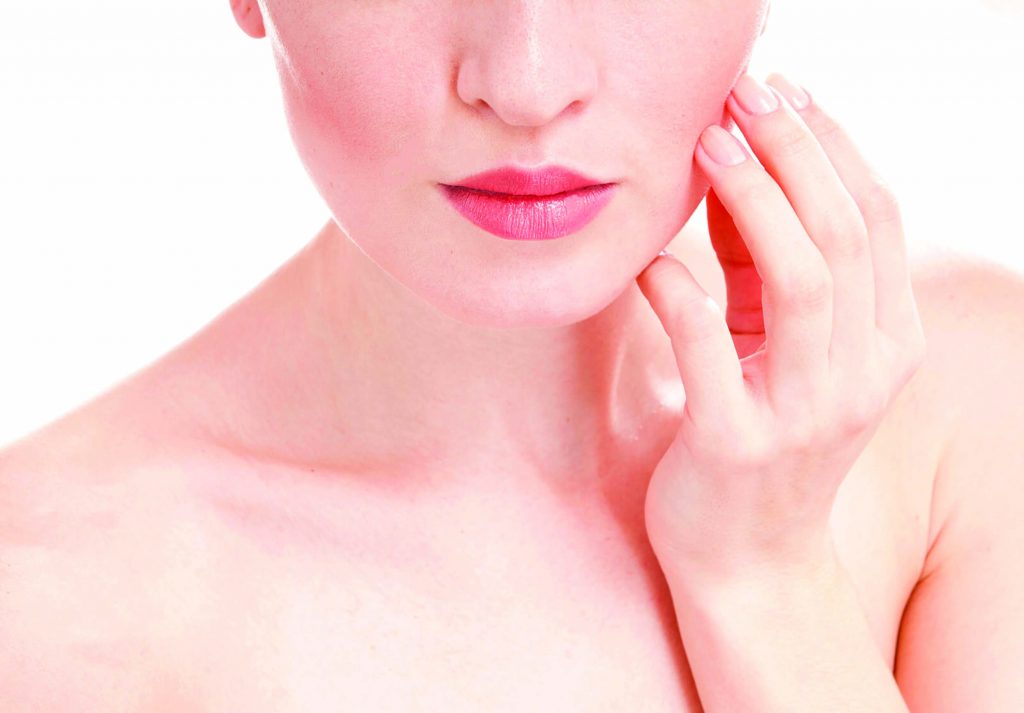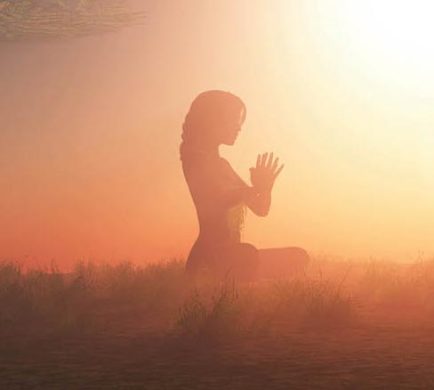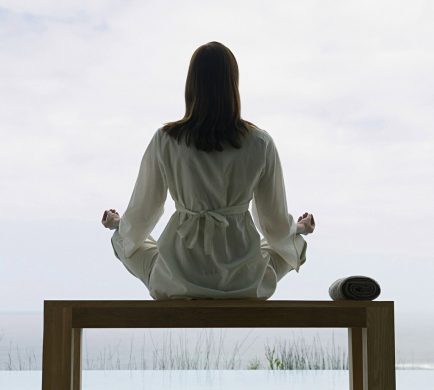with Margaret Tomaszewicz
When skin is affected by rosacea, it is incredibly sensitive. It needs special care to keep it calm, hydrated and healthy. In fact, preventing rosacea flare-ups is critical for anyone who suffers from this disorder. With this condition in check, it is possible to live a more active and productive life while also feeling greater self-confidence.
Most people who are diagnosed with this disorder are wondering how to get rid of rosacea. The bad news is that there is no cure for this condition. On the other hand, it is possible to minimize the disease’s symptoms with special rosacea skin care.
Natural remedies for rosacea are out there. At Woda Skin Care, we understand the special needs of skin that is prone to rosacea. That is why we produce numerous products that are designed to calm and soothe sensitive skin. These products provide the rich, nourishing hydration that rosacea-affected skin requires. The result is fewer flare-ups and calmer, clearer, more beautiful skin.
What Is Rosacea?
Rosacea is an extraordinarily common skin disorder. For most people, it begins as a simple tendency to flush or blush more easily than others. The nose and cheeks are most frequently affected by the condition, but it can spread to other areas, especially if it is not treated.
While rosacea commonly spreads to the chin and forehead, it also may show up on the chest, back and ears. Redness is the most frequently seen symptom. However, people who suffer from the disorder may have additional symptoms like swelling and breakouts that look a lot like acne. In extreme cases, the skin may become thicker and develop a bumpy texture. Some people even may develop ocular rosacea, a condition that causes the eyes and eyelids to become red and swollen.
People who have rosacea on face, ears, and neck undergo suffering that is well beyond just the physical. The National Rosacea Society conducted a survey that concluded that 41 percent of rosacea sufferers canceled social plans or avoided contact with the public during a flare-up. In the same survey, the Society discovered that nearly 70 percent of respondents reported feelings of lower self-confidence and self-esteem as a result of the condition. Additionally, 30 percent of participants said that they had missed days at work because of the disorder.
Rosacea further is a cause for worry. Patients experience anxiety over whether or not their condition will get worse or cause scarring. Overall, feelings of anxiety and depression tend to be a bit higher for people who have rosacea than they are for other people.
Finding the best rosacea treatment may be the key to improving quality of life. The more you understand about rosacea, the easier it will be to find the best rosacea treatment for you. When you learn how to how to treat rosacea naturally, you will have further assurance of knowing that you are not introducing any potentially harmful ingredients into your daily routine.
What Is the Main Cause of Rosacea?
It is natural to wonder how to get rid of rosacea, but it is perhaps just as valuable to understand what causes rosacea. It also may be comforting to know that you are not alone. The U.S. government has estimated that there are approximately 14 million people who have rosacea in America. The majority of people who are diagnosed with rosacea symptoms are between the ages of 30 and 50. Individuals of Celtic or Scandinavian descent appear to be more susceptible to the disease, and that is especially true when they have fair skin, blue eyes, and blonde hair. Overall, women are more prone to rosacea, though it is men who tend to get more severe forms of the condition. Despite all of these tendencies, it also is possible for children, the elderly and people of color to be diagnosed with rosacea.
Researchers have yet to pinpoint the precise cause of rosacea, which also may help to explain why there is no cure. Scientists have noted that the condition tends to run in families. Moreover, there seems to be a consensus that an overreaction in the immune system may be responsible for flare-ups. Researchers are even testing a theory that a bug known as H pylori, which may be found in the intestines, may be behind occurrences of rosacea. Other possible causes include a skin mite known as Demodex and the skin protein cathelicidin. With further study, researchers may someday pinpoint what causes rosacea and formulate a cure. Until then, it is essential for sufferers to figure out how to treat rosacea. While the exact cause of the disease remains a mystery, scientists do agree that each person who has rosacea has certain triggers that will cause a flare up. Identifying these triggers and working to limit or eradicate them can make it possible to experience rosacea symptoms only rarely.
Triggers may be simple things like cold wind blowing in your face or getting overheated. Some people find that spicy food causes an adverse reaction in their skin.Another common trigger is sun exposure. Usually, people with this condition have skin that is extraordinarily sensitive to the sun’s rays. This makes it imperative to never go outdoors without wearing sunscreen, and to wear a hat when outside.
What Are the Symptoms of Rosacea?
Dermatologists agree that there are four main sub-types of rosacea. The rosacea symptoms that the patient displays determine which sub-type they have. Some patients may exhibit symptoms from more than one sub-type of the condition.
The first sub-type features symptoms like redness in the middle of the face and blood vessels that are visible and broken. Patients with this sub-type of rosacea may suffer from swollen skin, and they may have dealt with a lifetime of super-sensitive skin. Dryness and rough spots are common. Many people complain that their skin frequently burns or stings with this type of rosacea.
The second sub-type looks a great deal like an acne breakout. In fact, many people initially mistake their rosacea symptoms for an acne flare-up, and they treat it accordingly. This usually means using a lot of products that dry out the skin. Unfortunately, this only makes the condition worse.
With the third sub-type of rosacea, patients suffer from bumpy, thickened skin. This subtype tends to be rare when compared with the first two sub-types. Its symptoms may include thickened skin, especially on the nose, though it also may appear on the chin, cheeks, forehead, and ears. Men are far more likely to be diagnosed with this sub-type of rosacea than women are.
Ocular rosacea is the fourth sub-type. It affects the eyes, making them bloodshot and watery. The eyes itch and are sensitive to light. Many people experience blurry vision during a flare-up. A visit to an ophthalmologist may be necessary when this condition makes an appearance.
What Is the Best Treatment for Rosacea?
When it comes to rosacea natural treatment is preferred. This is mainly because rosacea skin tends to be incredibly sensitive. Introducing a number of manmade chemicals and toxins can have a seriously detrimental effect. Instead, a rosacea skin care routine is recommended.
Dermatologists recommend against doing a great deal of scrubbing on skin that is prone to rosacea as this may cause a flare-up. Instead, it is wise to choose a gentle routine that uses mild skin care products.
Among Woda’s products, you’ll find several natural remedies for rosacea. These may help to soothe a flare up or prevent one from occurring. Of course, the benefits of using any of Woda’s products go well beyond keeping rosacea in check. All of Woda’s products are completely natural and organic so you can feel good about putting them on your skin and having them in your home. Moreover, nothing from Woda is ever tested on animals, and that’s something else you can feel good about.
Let’s take a closer look at some of Woda’s products that serve as a rosacea natural treatment
Clear Skin Moisturizer
Featuring all-natural ingredients like jojoba oil, Echinacea and lavender, this moisturizer is capable of totally transforming your skin. Jojoba oil is recognized for its anti-bacterial and anti-inflammatory properties, making it an ideal ingredient for rosacea skin care. Lavender is similarly beneficial thanks to its ability to reduce redness on the skin and to soothe irritation.
When used morning and evening, Woda’s Clear Skin Moisturizer can help to make rosacea flare-ups a thing of the past.
Clear Skin Anti-Blemish Mask
A formulation that is designed to soothe acne-prone skin masks this the ideal treatment mask for someone suffering from rosacea. Among the main components in the Clear Skin Anti-Blemish Mask is bentonite clay. An organic substance that naturally absorbs negatively charged toxins, bentonite clay creates an effective barrier between your skin and environmental toxins. Since these toxins may be responsible for some rosacea flare-ups, it is only natural that you would want to make this ingredient part of your rosacea natural treatment. Like the moisturizer mentioned above, this product also contains jojoba oil, bringing essential anti-inflammatory properties to this ultra-soothing mask.
Age Defy: Vitamin C & Stem Cell Serum
When it comes to natural remedies for rosacea, few things can match the effectiveness of a powerful serum. This one is particularly beneficial for people who want to know how to get rid of rosacea. A host of beneficial ingredients enable this serum to soothe and hydrate even the most sensitive skin. On the label, you’ll find components like aloe, hyaluronic acid, witch hazel, vitamin C and vitamin E. Each one is sourced with care to ensure an all-natural, totally organic experience for you that may mean that you see fewer rosacea flare-ups.
Your skin care routine can make all of the difference when you are battling rosacea. Although a cure is not available, control is certainly possible. When you understand your triggers and follow a sensible rosacea skin care routine, you will discover that your overall quality of life improves. As the physical symptoms subside, your self-confidence will rise.







